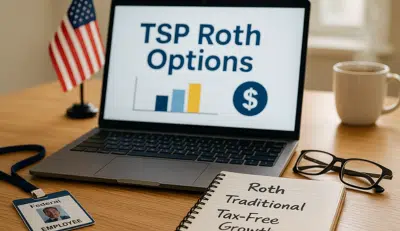Retirement Savings Tips for Federal & Postal Pros
Are you a federal or postal employee wondering how much retirement savings you really need — and how to build it? You’re not alone. Let’s cut through the noise and walk through a clear, reliable plan you can trust.
Why retirement savings matter (especially for you)
Many people believe their pension or benefits will cover everything. But unless you take action today, gaps often remain. Studies show about 40% of U.S. workers aren’t saving enough to maintain their current lifestyle after leaving work.
As a federal or postal employee, you have perks many don’t — for example, access to the Thrift Savings Plan (TSP) and defined benefit pensions under FERS or CSRS. But those alone may not fully cover all future costs (health care, inflation, extra expenses). Adding solid retirement savings helps give you a safety net you control.
What makes high‑performing content work (and how we’ll use it)
I reviewed top articles on retirement planning and found three core strategies they use well:
-
Simple, clear steps rather than overwhelming theory (e.g. “10 ways to boost savings”).
-
Stories, examples, or numbers to make advice tangible.
-
Timely rules or laws, like catch-up contributions or withdrawal guidelines, to ground advice in real rules.
We’ll borrow those strategies: clear steps, examples, and rules that apply to your situation. But we’ll tailor everything to your federal and postal career path.
How to build smart retirement savings — the 5 key steps
Here’s a practical five-step path — built to work with your benefits, not fight against them.
1. Know your baseline: pension + Social Security + gap
Start by figuring out what your basic income sources will be:
-
Your FERS or CSRS pension (or postal equivalent)
-
Social Security (if you qualify)
-
Any other income (rental, side work, etc.)
Then ask: What is your target annual income in retirement? Many experts suggest planning to replace 70–90% of your pre‑retirement income.
The difference between that target and your known income is your gap — what retirement savings must fill.
2. Use your TSP — and contribute early, consistently
Your TSP is a powerful tool:
-
Contribute as much as you can — even a small regular amount helps.
-
If your agency offers matching, contribute at least enough to get the full match (that’s free money).
-
Automate contributions so you “pay yourself first.”
Experts often recommend saving about 10% of pay (or more) toward retirement (including match) as a baseline.
Even if you start late, catch-up contributions (for those 50+) let you boost your rate. The SECURE 2.0 Act expanded some of those rules.
3. Diversify where your savings go
Don’t keep everything in a single fund. A mix helps balance growth and safety:
-
Stocks (for growth)
-
Bonds or safer funds (for protection)
-
Inflation‑protected assets
As you near retirement, move gradually toward safer options. In the five years before and after retirement, many advisors suggest reducing risk to smooth the ride.
4. Watch your withdrawal rate
Once you retire and begin tapping savings, don’t withdraw too much too soon. The classic “4% rule” suggests withdrawing about 4% of your nest egg in the first year, then adjusting with inflation.
Depending on your mix and expenses, a safer range might be 3% to 5%.
5. Adjust and revisit often
Life changes: you may shift roles, get raises, or have unexpected costs. Your strategy should flex:
-
Review your target every few years
-
Boost contributions whenever possible
-
Rebalance your investments to maintain your mix
-
Consider side income or part‑time work in early years
Simple example: Jane the Postal Worker
Let’s say Jane earns $70,000. She estimates she wants $50,000/year in retirement (70%). She expects $25,000 from her pension + Social Security. That leaves a gap of $25,000.
She contributes 8% to her TSP (with matching from her agency) and invests in a mix of stocks and bonds. At age 50, she uses catch-up contributions to raise her rate. She’s cautious in the final 5–10 years before retiring, moving more assets to safer funds.
When she retires, she plans a 4% withdrawal (or less) to help her savings last. She checks her plan every 3–5 years and adjusts based on inflation, market, or new goals.
That plan gives Jane confidence she won’t outlive her savings.
Common pitfalls — and how to avoid them
| Mistake | Why it hurts | Smart fix |
|---|---|---|
| Relying too much on pension only | Doesn’t cover all costs | Use savings to close the gap |
| Ignoring inflation or health costs | Your money loses value over time | Use inflation‑adjusted investments and plan for medical costs |
| Withdrawing too much too early | You risk running out of money | Use conservative withdrawal rates (3–5%) |
| Not revising plan | Life changes quickly | Revisit strategy every 3–5 years |
Your Next Steps
If you’re a federal or postal employee ready to take control of your retirement savings:
-
Log into your TSP or agency benefits portal and run a “what‑if” analysis.
-
Increase your contribution (even 1%) — you’ll hardly feel it.
-
Share this with a coworker or spouse who might also benefit.
Want help crafting a plan just for your role or stage? Reach out to us at The Benefit Coordinators — we’ll help you build your path with confidence.





